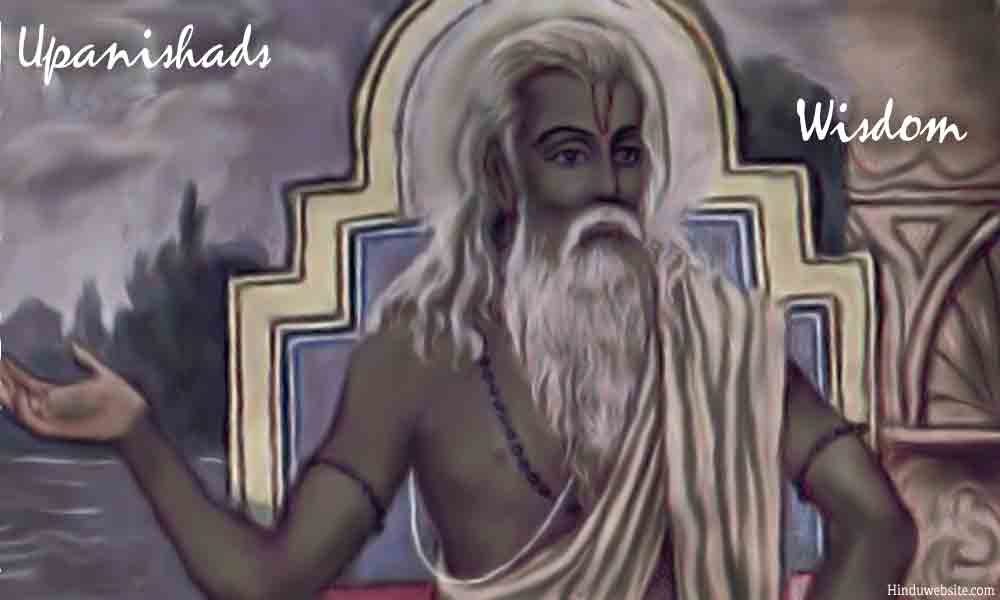
Self-knowledge Beyond the Mind

What are you? Is your notion of self real? How does it come into existence? Is it the sum total of your experiences and awareness? Or is it a mere notion sustained by a few persistent memories, attachments and desires? Are you the sum total of a few selected thoughts and memories or all thoughts and memories? Are you sustained by a few aspects of your past or all your past? Do you come into existence by the association of these thought and memories, or do you exist without them? If you are a selection of thoughts and memories, what happens to you when you enter into deep sleep? Do you still exist then?
Such were the questions the Upanishadic seers explored in ancient India several thousands of years ago to know the secrets of existence. In doing so they followed a very unique method to minimize the interference of the mind and transcend its limitations. They silenced their minds and allowed the higher knowledge to manifest itself in their consciousness. You can do it even today. There are two types of knowing: knowing by knowing and knowing without knowing. In the former there is desire, effort and egoism, in the latter there is renunciation of effort and surrender to silence. Higher knowledge arises from the latter. This affirmed in the Kena Upanishad, which suggests that in knowing Brahman there is no knowing and in not knowing Brahman there is true knowing.
The ancient seers believed that the deepest mysteries of our existence were hidden in deep sleep where neither the mind, nor the senses, nor the dreams can reach? They tried to enter into this state through silence, by withdrawing their minds and senses and practicing meditation and austerities.
Yoga was born this way. The purpose of yoga is to enter into deep silence and simulate deep sleep to experience stillness in the absence of mind and modifications. Anyone who has doubts as to the nature and origin of Yoga should pay attention to this very ancient concept of Hinduism. Knowledge comes through silence and silence is best achieved when you practice yoga. The roots of yoga are deeply embedded in ascetic traditions of Hinduism. Yoga was not a religion. It was a method which emerged from the same beliefs and practices that gave birth to the Upanishadic philosophy and countless ascetic traditions of Hinduism.
Yoga became central to Hindu ascetic movements because its methods and techniques offered the best and the most effective means to silence the mind. Even today, there is no better system than yoga to control your mind and stabilize it. Austerities (tapas), meditation (dhyana) and other practices of yoga enabled the seers of ancient India to enter into deeper states of consciousness and witness themselves in subtle states without the familiar disturbances caused by Nature. The logic they followed was simple. If you wanted to know truths that existed beyond the mind, you should silence the mind and prevent its interference. The Buddha also entered into the silence of his mind, but there saw nothing but an absence of desire and the becoming. Hence, he acknowledged the silencing of desires, but remained skeptical about the existence of an eternal and immutable Self.
The Upanishadic seers who also entered into a similar state of consciousness saw differently. They not only saw the absence of desires and becoming but also an eternal and immutable Self hidden in that silent consciousness, acting as the supporter and enjoyer of all the functions of the mind and body. Hence they declared that man was made in the image of a Cosmic Person, the Creator Himself.
Each and everyone of us has an opportunity to practice yoga and enter into these states to see for ourselves what is hidden in each of us, where there is anything beyond this flux which we call as our consciousness or awareness. Mere intellectual knowledge does not help us to remain awake in deep sleep. But through yoga, we can learn to be observant and mindful when the mind and body are asleep. Only then we can realize the truth and ascertain whether the Buddha was right or the seers of the Upanishads.
When you reach that state, you will realize that the notion of self created by your mind is not your real Self but a superficial individuality sustained by desires and attachments. There is a far deeper identity or individuality that is not of this world and not created by thoughts or desires. That is the real Self. Hence the saying, when the world is asleep, the seer is awake and when the world is awake, the seer is asleep.
Suggestions for Further Reading
- Vidya and Avidya in Brihadaranyaka Upanishad
- The Wisdom of the Isa Upanishad
- Isa Upanishad On The Importance Of Duty
- Jnana, Knowledge in Hinduism
- Wisdom of the Katha Upanishad
- Kena Upanishad on the Limits of Knowledge
- Self-knowledge Beyond the Mind
- Self-Realization, Atma Bodha, in Hinduism
- Sex and Spirituality in the Upanishads
- The Origin And Development Of Karma Doctrine In Hinduism
- The Wisdom of the Upanishads, Main Page
- Brahman, The Highest God Of Hinduism
- Essays on The Upanishads
- Upanishads and Their Philosophy - Links
- Introduction to the Upanishads of Hinduism
- Minor Upanishads
- Essays On Dharma
- Esoteric Mystic Hinduism
- Introduction to Hinduism
- Hindu Way of Life
- Essays On Karma
- Hindu Rites and Rituals
- The Origin of The Sanskrit Language
- Symbolism in Hinduism
- Essays on The Upanishads
- Concepts of Hinduism
- Essays on Atman
- Hindu Festivals
- Spiritual Practice
- Right Living
- Yoga of Sorrow
- Happiness
- Mental Health
- Concepts of Buddhism
- General Essays